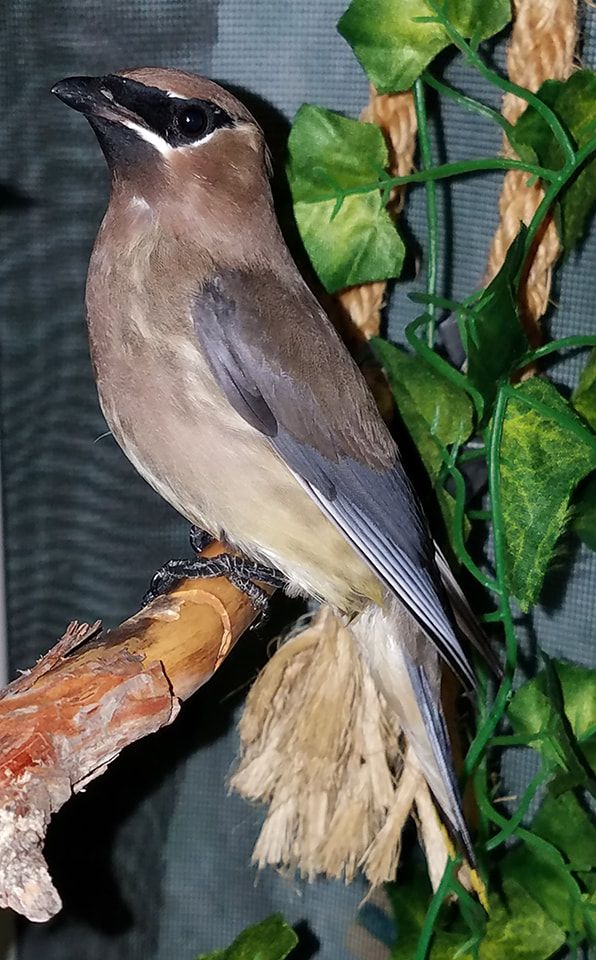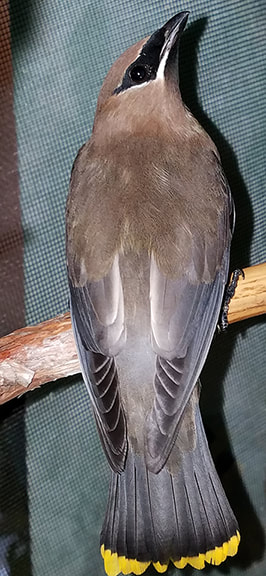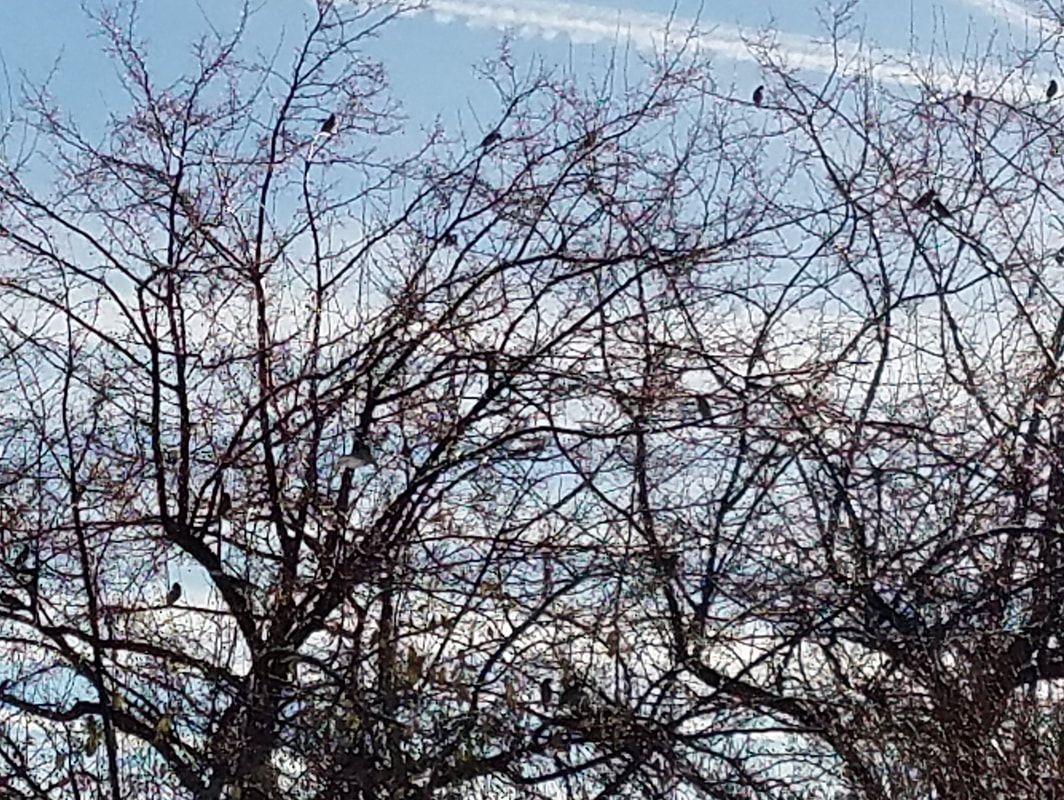They look larger than they really are, at only 2 or so ounces. They are tiny really. They live almost entirely on fruit in winter, and today they have moved towards more of our planted species, like the mountain ash. However, they get their name from the Cedar tree, which they ate the berries of historically. They are highly susceptible to the insecticides and other sprays with coat our trees and shrubs with. And being so little, it does not take much to make them sick. At least 2 of my intakes were sick from what I think was pesticide poisoning. One did not survive, the other I just released. If you love birds, please do not spray your trees with anything...not even "non-toxic" products like soap (soaps kills the waterproofing on birds and makes them sick too). These are not feeder birds, but if you want them in your yard plant serviceberry, mountain ash, cherry trees, crabapple, and raspberries - but be happy birds are eating all your fruit! Know that your fruiting trees are keeping these cuties alive. In rehab, they are eating soaked currents, pear, chopped raisens, raspberries, and blueberries, along with mealworms (at least they are offered). Unlike some birds in which we try to return them to their original location and group, with the Waxwings, we release them to larger flocks with abundant resources (if we can). Cedar Waxwings are flocking up at this time anyway and we like to give our rehabs a good chance. There is safety in numbers, and they have night-time buddies to stay warm with on freezing nights and experienced birds that can lead the way to food sources.
Enjoy these special birds! Keep some small binocs in your car, and take that moment or two just to get close up look. However, never walk up to trees at night and try to get closer looks at birds resting for the night or even on really cold days. Once a bird flies, it loses all of its built up heat. Birds can die from having to lose this critical heat upon a flight made late in the day. For the tiny songbirds, they may not have the physical reserves to make more heat for their frigged night. Enjoy those Waxwings! See the fb post for video. Comments are closed.
|
AboutNative Bird Care's is celebrating its 10th anniversary! Our main focus is song, shore, and waterbirds. We offer specialized care and facilities for these extraordinary birds.. Archives
January 2024
Categories
|



 RSS Feed
RSS Feed